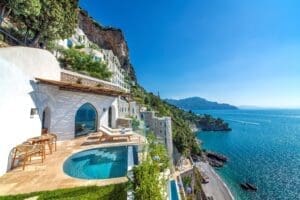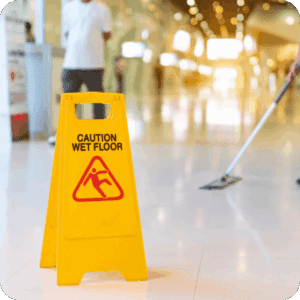Just returned from Toronto where I attended TBEX 2013, the Travel Blogger Exchange with over 1,300 attendees including close to 1,000 travel bloggers, journalists as well as North American destinations courting each other with speed-dating meetings, alongside a full schedule of seminars and educational keynotes about the state of the travel blogging industry. While there were many great insights shared during the two-days event, I wanted to share with you some of the highlights from William Bakker's session, called "Lessons Learned: Working with Bloggers & Destinations". It was interesting to see that, just like women are from Venus and men are from Mars, there are similar contrasts between travel bloggers and destination representatives.
CRITERIA USED BY DESTINATIONS
William is an associate partner at Think! Social Media, a boutique agency that specializes in social media and new technologies, in particular with destination marketing organizations (DMOs), helping them put social media and digital tactics at the core of their strategies, in particular when reaching out to influencers. After giving the audience a few great examples of recent initiatives, including the 365 days of dining foodie blog showcasing restaurants in Tourism Richmond (BC, Canada), he gave some excellent insights on what criteria destination representatives were using in selecting travel bloggers in various outreach programs with his agency:
- Value to the blogger: Instead of wondering what value the blogger can add to your destination, you need to flip the question around. If the blogger specializes in off-the-beaten-path adventure travel, should you really invite him over for a family-themed trip in a big city?
- Reach: The size of the audience is often considered the utmost factor, but it's not always the most important one. Yet, it's key to know how many readers go to your blog, how many followers or fans you have.
- Audience demographics: More than the sheer quantity of people reading your blog, the question is WHO is reading it: are they young or old, French or English, affluent travelers or occasional day-trippers, etc.
- Influence in a niche: If we segue from the two previous points, you may have specific influence in a particular niche: boomers, 50+, solo travelers, photography or video blogging, backpacking, etc.
- Connection to other influencers: Contrary to most journalists, travel bloggers tend to be part of various communities of freelancers, travel aficionados and passionate about a topic or another. Thus, they carry substantial influence amongst peers as well.
- Quality and style: Yes, how you write, how you speak or take pictures is very important. Brands don't want to be associated with poorly produced material. Period.
- Speed of communication: In some instances, destinations will opt for specific social influencers because of their known speed to pinstagram, tweet or blog what's going on during a trip, often enough before it even started!
- Use of technology and tools: Not that you should be using every tool there is… but it's an asset when you have an active presence on as many platforms as possible.
- Personality: What's your personal touch? Humor, irony, contemplative descriptions? Whatever your style may be, it does become a part of the decision-making for destinations, so long as you stay true to your "voice" throughout your various contents and platforms.

Toronto evening skyline, taken during TBEX 2013
10 TAKEAWAYS FOR BLOGGERS & DMO
These criteria may or may not be used by all destinations in choosing travel bloggers, but they do make intuitive sense as important elements in the decision-making process. The following were the key takeaways for both travel bloggers and destinations:
BLOGGER TAKEAWAYS
- Find your niche: Stay true to your voice and know your audience are other ways of telling your know you've found your niche, or area of expertise.
- Build a community: Networking is not a one-step process. Seek out twitter chats, Google+ communities or Linkedin discussions, and do attend events IRL – in real life, just like TBEX or other industry events.
- Be clear about your approach and objectives: You should have a content mission statement for your blog or content platforms, just like brands do!
- Understand the destination's objectives and expectations: Is the destination seeking awareness and brand buzz? Or perhaps a laser-like focus on gay travel or solo travel amongst the boomer demographic? Can you fulfill these expectations?
- Stay humble: Whether you have a PageRank of 3 or 7, and whether you have 100,000 followers on Twitter versus 10,000, destinations who seek to work with travel bloggers over a 3-week campaign will opt for the nicer personality rather than the total prima dona.
DMO TAKEAWAYS
- Invest time to find the right bloggers: It's not enough to base your decision-making on the blogger's Klout score alone. Do the research to find out about online community engagement and other intangible elements important to the "bigger" view.
- Don't just focus on web traffic when selecting: Traffic referral is certainly a key component, but they can be misleading. Because a blogger boasts 10,000 visits per day to their site, do you know where readers go? Could be to the fashion section of the blog, or to an older travel article that keeps getting hits through time. Again, look at social media engagement and expertise in the niche.
- Rethink your measurement of success: Because travel bloggers are part of a greater community, some may produce great content but can also help with product research, not to mention benefits of long term relationships, referring other bloggers for extra awareness and publication opportunities, for example.

- Wifi everywhere, all the time. If you want bloggers to tweet, pinstagram or facebook live during their travel while at your destination, wifi is not a nice-to-have feature. It's a must-have!
- Personalize and build in some free time: Destinations will tend to build full-on itineraries to maximize the time spent by the blogger there, but this is not necessarily a good idea. Make sure you personalize the trip according to blogger's niche of expertise, and do leave some time for them to roam free in the city or resort, where they can choose to go with the flow and speak to things they know best or that appeals to them. In the end, everybody wins.
If you are a travel blogger, I'd be interested to hear your opinion on the matter. As for DMOs, do you agree with the above criteria and takeaways? Please do leave a comment in the section below and let's see if we can practice what we preach, here…
Source: Frederic Gonzalo
About the author
Senior marketing and communications expert & speaker with 18 years expertise in the travel and hospitality industry. Consulting since early 2012, I provide strategic planning, social media & mobile development counseling to small and medium businesses alike. Reach me at frederic@gonzomarketing.biz















